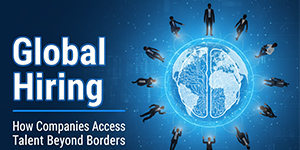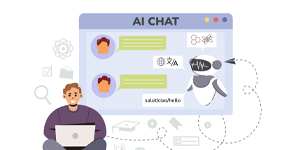Recruitment Tech Stack: Must-Know HR Tools for 2025
In today’s highly competitive job market, technology has become the backbone of successful hiring strategies. As organizations expand globally and remote work becomes the new normal, the demand for efficient digital solutions in human resources continues to grow. For 2025, one thing is clear — the right recruitment tech stack can make or break your company’s ability to attract, assess, and retain top talent.
This article explores the HR technology tools that are reshaping recruitment, from applicant tracking systems (ATS) to recruitment automation software, AI in recruitment, and HR analytics tools. You’ll also learn how to build an efficient recruitment technology stack, the top recruitment tools HR teams should use in 2025, and what makes the best HR tech stack for modern recruitment.
Understanding the Recruitment Tech Stack
A recruitment tech stack is the complete ecosystem of digital tools, platforms, and software solutions that HR departments use to modernize and streamline their hiring processes. In today’s fast-paced business environment, recruitment teams face growing pressure to attract top talent quickly while maintaining a personalized candidate experience. To meet these demands, HR professionals are increasingly relying on technology to manage every stage of the hiring journey — from sourcing and screening to interviewing and onboarding.
In the past, recruitment was largely a manual process. HR teams juggled spreadsheets, emails, and paper resumes to track applicants, schedule interviews, and share feedback. This traditional approach was time-consuming, prone to errors, and often led to delays in hiring. However, as hiring volumes increased and candidate expectations became more sophisticated, manual systems could no longer keep pace. Organizations needed smarter, more integrated solutions — and that’s where the best HR tech stack for modern recruitment emerged.
Today’s recruitment tech stack integrates automation, analytics, and artificial intelligence to create a seamless, data-driven hiring experience. Instead of working in silos, these tools communicate with one another, ensuring that recruiters can access real-time data, automate repetitive tasks, and make more informed decisions.
An efficient recruitment technology stack typically includes several key categories, each serving a distinct purpose within the talent acquisition ecosystem:
• Applicant Tracking Systems (ATS): These tools organize candidate data, track progress through the hiring funnel, and centralize communication.
• Recruitment Automation Software: Designed to handle repetitive processes like job posting, resume screening, and candidate outreach.
• AI in Recruitment: Artificial intelligence enhances candidate matching, predicts job fit, and minimizes unconscious bias in decision-making.
• HR Analytics Tools: These provide valuable insights into hiring trends, recruitment metrics, and performance outcomes to improve strategic planning.
• Digital Hiring Solutions: Platforms for video interviews, online assessments, and e-signatures that support remote and hybrid hiring.
• Onboarding and Employee Experience Platforms: Tools that ensure new hires transition smoothly into the organization with structured training and engagement.
When used together, these HR technology tools form a cohesive and powerful recruitment system. They not only reduce administrative workload but also empower HR teams to focus on what truly matters — building relationships, nurturing candidate experiences, and aligning hiring strategies with business goals.
By investing in the right recruitment tech stack, companies can achieve faster hiring cycles, better-quality hires, and a more consistent, equitable hiring process — essential qualities for staying competitive in the digital age of recruitment.
The Role of HR Technology Tools in Modern Hiring
The future of recruitment will be defined by the effective adoption and integration of advanced HR technology tools. As we move into 2025, the pace of digital transformation continues to accelerate, reshaping how organizations attract, assess, and engage with talent. For HR professionals, mastering technology is no longer optional — it’s a strategic necessity. Whether your organization is a fast-growing startup or a global enterprise, building the right recruitment tech stack ensures your hiring process remains efficient, scalable, and data-driven.
In today’s competitive job market, candidates expect fast, transparent, and personalized experiences. At the same time, recruiters face increasing pressure to fill roles faster while maintaining quality and compliance. This is where modern HR technology tools play a critical role. By leveraging automation, artificial intelligence, and analytics, HR teams can streamline operations, reduce manual work, and focus on high-value activities such as candidate engagement and strategic workforce planning.
Key Benefits of HR Technology Tools
1. Efficiency and Automation
One of the greatest strengths of modern HR software is efficiency. Through recruitment automation software, repetitive tasks like job postings, resume screening, and interview scheduling can be automated. This not only saves time but also reduces the risk of human error, enabling recruiters to focus on building meaningful connections with candidates.
2. Data-Driven Insights
With the rise of HR analytics tools, decision-making in recruitment has become more scientific and measurable. These platforms allow HR teams to track critical metrics such as time-to-hire, cost-per-hire, and candidate source effectiveness. Moreover, analytics empower recruiters to forecast hiring needs, identify bottlenecks in the process, and continuously optimize strategy. Understanding how HR analytics tools improve hiring decisions helps HR leaders make smarter, evidence-based choices.
3. Enhanced Candidate Experience
The candidate experience has become a defining factor in employer branding. Digital hiring platforms and integrated communication tools enable recruiters to provide timely updates, transparent feedback, and engaging interactions throughout the process. By including digital hiring solutions as part of your recruitment tech stack, your organization ensures that candidates feel valued, informed, and connected from the first interaction to final onboarding.
4. Reduced Bias and Improved Fairness
The use of AI in recruitment has significantly improved fairness and objectivity in hiring. By focusing on data such as skills, competencies, and experience, AI algorithms help minimize unconscious bias in candidate evaluation. This not only creates more inclusive hiring outcomes but also aligns with the growing global emphasis on diversity, equity, and inclusion (DEI). When integrated properly, AI in recruitment enhances both quality and fairness in talent acquisition.
5. Scalability and Adaptability
As businesses expand and hiring needs evolve, scalability becomes essential. A well-built recruitment tech stack can easily adapt to accommodate increased candidate volumes, new job markets, and remote hiring processes. Cloud-based HR technology tools allow teams to manage recruitment seamlessly across multiple geographies while maintaining consistency and compliance.
Applicant Tracking Systems (ATS): The Backbone of Recruitment
At the center of any strong recruitment tech stack lies the applicant tracking system (ATS). This software helps HR teams manage candidates through every stage of the hiring journey — from job posting to offer acceptance.
Why Applicant Tracking Systems (ATS) Matter
• Centralized Candidate Management: ATS platforms collect all candidate data in one place, allowing recruiters to track applications, resumes, and interview feedback easily.
• Streamlined Workflows: Recruiters can automate status updates, reminders, and notifications, saving countless hours.
• Improved Collaboration: Hiring managers and HR professionals can collaborate within the ATS to share evaluations and make faster decisions.
In 2025, the best applicant tracking systems (ATS) also integrate with recruitment automation software, HR analytics tools, and even AI in recruitment modules to enhance accuracy and efficiency.
Some popular ATS options include Workday, Greenhouse, Lever, and BambooHR — each designed to fit different organizational sizes and recruitment needs.
Recruitment Automation Software: Redefining Efficiency
Automation has transformed recruitment into a highly efficient process. Recruitment automation software uses machine learning and process optimization to eliminate repetitive manual work.
This technology allows recruiters to focus more on strategy and relationship-building rather than administrative tasks. For example, automation tools can:
• Automatically post jobs across multiple job boards.
• Pre-screen candidates using predefined filters.
• Send follow-up emails and reminders to keep candidates engaged.
Why Recruitment Automation Software is Essential in 2025
1. Speed: Automation drastically reduces time-to-hire.
2. Consistency: Every candidate experiences a standardized and professional process.
3. Integration: Many automation tools sync with applicant tracking systems (ATS) and HR analytics tools for end-to-end recruitment optimization.
Companies using advanced recruitment automation software report improved efficiency and a higher percentage of quality hires. It’s a core component of the best HR tech stack for modern recruitment.
The Power of AI in Recruitment
Artificial Intelligence (AI) has revolutionized how HR teams identify, evaluate, and hire talent. AI in recruitment refers to technologies that use machine learning and natural language processing to automate complex recruitment functions such as resume screening, predictive hiring, and candidate engagement.
Applications of AI in Recruitment
• Resume Screening: AI tools scan resumes for relevant skills and experience, saving recruiters from manual review.
• Chatbots for Candidate Engagement: AI-driven chatbots handle initial queries, schedule interviews, and provide updates.
• Predictive Analytics: AI predicts which candidates are most likely to succeed based on historical performance data.
By integrating AI in recruitment, companies can eliminate bias, enhance objectivity, and speed up decision-making. AI complements recruitment automation software and HR analytics tools, forming a powerful trio within the recruitment tech stack.
As we move into 2025, AI in recruitment will continue to evolve, offering even more advanced predictive models and human-like conversational capabilities.
HR Analytics Tools: Turning Data into Smart Hiring Decisions
One of the most transformative developments in modern HR is the rise of HR analytics tools. These tools analyze vast amounts of data to help HR leaders understand patterns, improve hiring strategies, and make informed decisions.
How HR Analytics Tools Improve Hiring Decisions
• Performance Forecasting: Analytics tools predict how well candidates might perform in specific roles.
• Sourcing Optimization: Identify which job boards or channels bring the best candidates.
• Bias Detection: Spot patterns that might indicate unconscious bias in hiring decisions.
• Recruitment ROI Measurement: Evaluate the effectiveness of campaigns, recruiters, and tools in your recruitment tech stack.
By understanding how HR analytics tools improve hiring decisions, companies can fine-tune their recruitment approach and achieve better alignment between candidates and job requirements.
Data-driven recruiting not only enhances efficiency but also ensures fairness and transparency across the hiring process.
Digital Hiring Solutions: Building a Seamless Candidate Experience
The digital transformation of recruitment extends beyond internal efficiency — it also improves the external candidate experience. Digital hiring solutions enable organizations to deliver smooth, engaging, and interactive recruitment journeys.
These solutions include video interview platforms, digital assessments, e-signature tools, and remote onboarding systems. With remote and hybrid work models becoming more common, digital hiring solutions are now an essential part of any recruitment tech stack.
Advantages of Digital Hiring Solutions
• Accessibility: Candidates can apply, interview, and onboard remotely.
• Brand Consistency: Customizable interfaces reflect the company’s culture and values.
• Integration: Seamlessly connect with applicant tracking systems (ATS) and HR analytics tools for centralized data flow.
The best HR tech stack for modern recruitment leverages digital hiring platforms to ensure a frictionless process from start to finish — both for recruiters and candidates.
Top Recruitment Tools HR Teams Should Use in 2025
As HR technology rapidly evolves, identifying the top recruitment tools HR teams should use in 2025 is critical for staying ahead. These tools blend automation, analytics, and artificial intelligence to create a cohesive, scalable hiring infrastructure.
Key Tools to Include in Your Recruitment Tech Stack
1. ATS Platforms: Greenhouse, Workday, and BreezyHR for applicant management.
2. Automation Tools: Zapier, SmartRecruiters, and Manatal for process efficiency.
3. AI Screening Tools: HireVue and Pymetrics for intelligent candidate assessment.
4. Analytics Platforms: Tableau and Visier for recruitment data insights.
5. Digital Hiring Solutions: Zoom, Codility, and DocuSign for virtual interviewing and onboarding.
Combining these tools strategically results in the best HR tech stack for modern recruitment — one that minimizes friction, enhances collaboration, and maximizes hiring quality.
How to Build an Efficient Recruitment Technology Stack
Building the perfect recruitment tech stack requires careful planning and understanding of your organization’s hiring goals. Here’s a step-by-step guide on how to build an efficient recruitment technology stack in 2025:
Step 1: Assess Your Needs
Identify your biggest recruitment challenges — is it sourcing, screening, or communication? The tools you choose should directly address these pain points.
Step 2: Define Your Core Stack
Your core stack should include an applicant tracking system (ATS), recruitment automation software, and HR analytics tools. These three form the foundation for efficient hiring.
Step 3: Integrate AI and Automation
Leverage AI in recruitment to enhance predictive capabilities and automate repetitive workflows. This integration ensures data flows smoothly across systems.
Step 4: Focus on Analytics
Incorporate HR analytics tools that can measure effectiveness, detect bias, and forecast talent needs. Understanding how HR analytics tools improve hiring decisions helps HR leaders optimize strategy continuously.
Step 5: Prioritize Candidate Experience
Include digital hiring solutions such as video interview tools, chatbots, and onboarding platforms to ensure candidates enjoy a seamless experience.
Step 6: Ensure Scalability and Compliance
The best HR tech stack for modern recruitment should grow with your company and comply with global data privacy laws like GDPR.
By following these steps, organizations can create a future-proof system that adapts to changing recruitment demands and technological trends.
Why 2025 Demands a Smarter Recruitment Tech Stack
The hiring landscape in 2025 is expected to be more data-driven, automated, and AI-powered than ever before. As remote work and global talent pools expand, HR departments must manage vast candidate databases efficiently.
Here’s why investing in a modern recruitment tech stack is no longer optional:
• Competition for Talent: Top candidates expect fast, digital-first hiring experiences.
• Data-Driven Decision Making: Using HR analytics tools ensures evidence-based hiring.
• Automation at Scale: Recruitment automation software and AI in recruitment reduce human error and administrative load.
• Sustainability: Cloud-based digital hiring solutions promote paperless, eco-friendly hiring.
In short, 2025 will reward organizations that embrace innovation and align their recruitment strategies with the best available HR technology tools.
The Future of HR: Integration, Intelligence, and Insight
As the HR industry moves forward, integration will be key. The future recruitment tech stack will not be a collection of isolated systems but a unified platform powered by AI, automation, and analytics.
Imagine a system where applicant tracking systems (ATS), recruitment automation software, HR analytics tools, and digital hiring solutions all work together seamlessly. This integration allows recruiters to visualize the entire hiring pipeline — from sourcing to onboarding — in real time.
Moreover, as predictive analytics advance, how HR analytics tools improve hiring decisions will become even more sophisticated. Recruiters will be able to anticipate workforce needs, reduce turnover, and continuously refine their strategies based on data insights.
The best HR tech stack for modern recruitment will ultimately evolve into an intelligent ecosystem — one that learns, adapts, and optimizes itself.
Conclusion
In 2025, the success of every organization will depend on its ability to attract and retain the right talent efficiently. The foundation of that success lies in the recruitment tech stack — a blend of HR technology tools, recruitment automation software, applicant tracking systems (ATS), AI in recruitment, HR analytics tools, and digital hiring solutions.
Understanding how to build an efficient recruitment technology stack is essential for HR leaders aiming to stay ahead of the competition. When thoughtfully implemented, these technologies not only streamline operations but also ensure fair, data-driven, and engaging hiring processes.
As the industry continues to evolve, one thing remains certain: the organizations that invest in the top recruitment tools HR teams should use in 2025 — and leverage how HR analytics tools improve hiring decisions — will be the ones shaping the future of work.
The best HR tech stack for modern recruitment isn’t just about tools; it’s about transformation. It’s about empowering people through technology — and that’s what defines the future of recruitment in 2025 and beyond.





